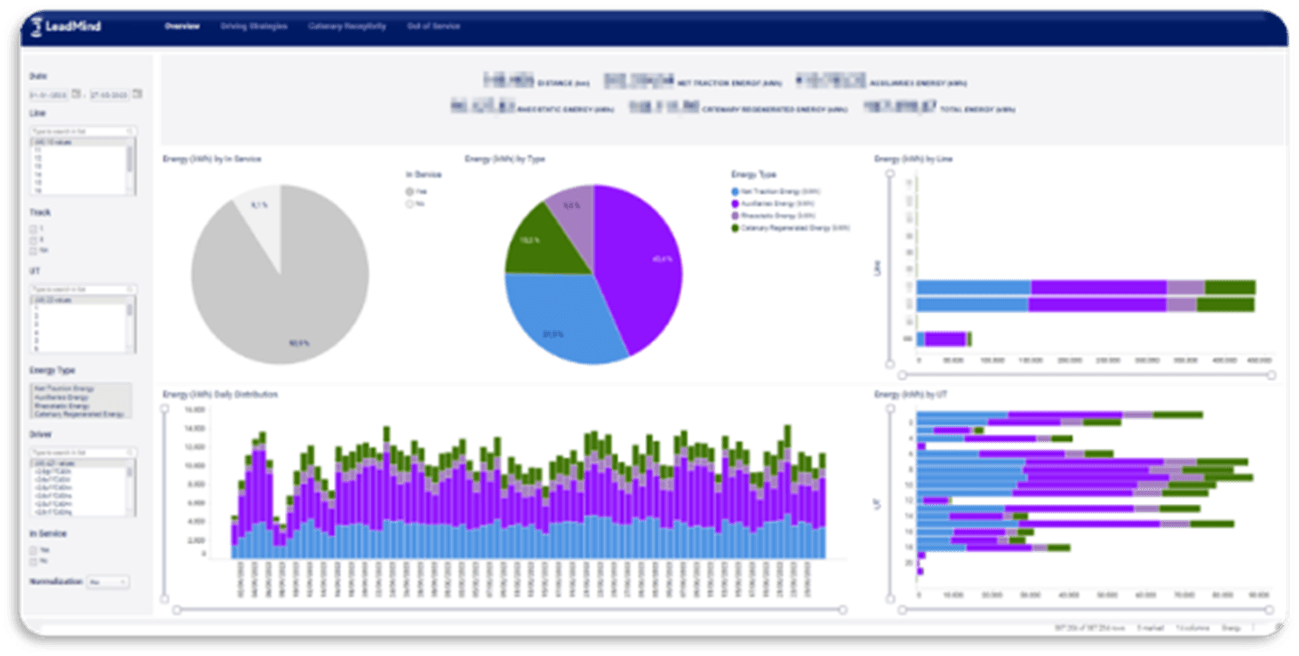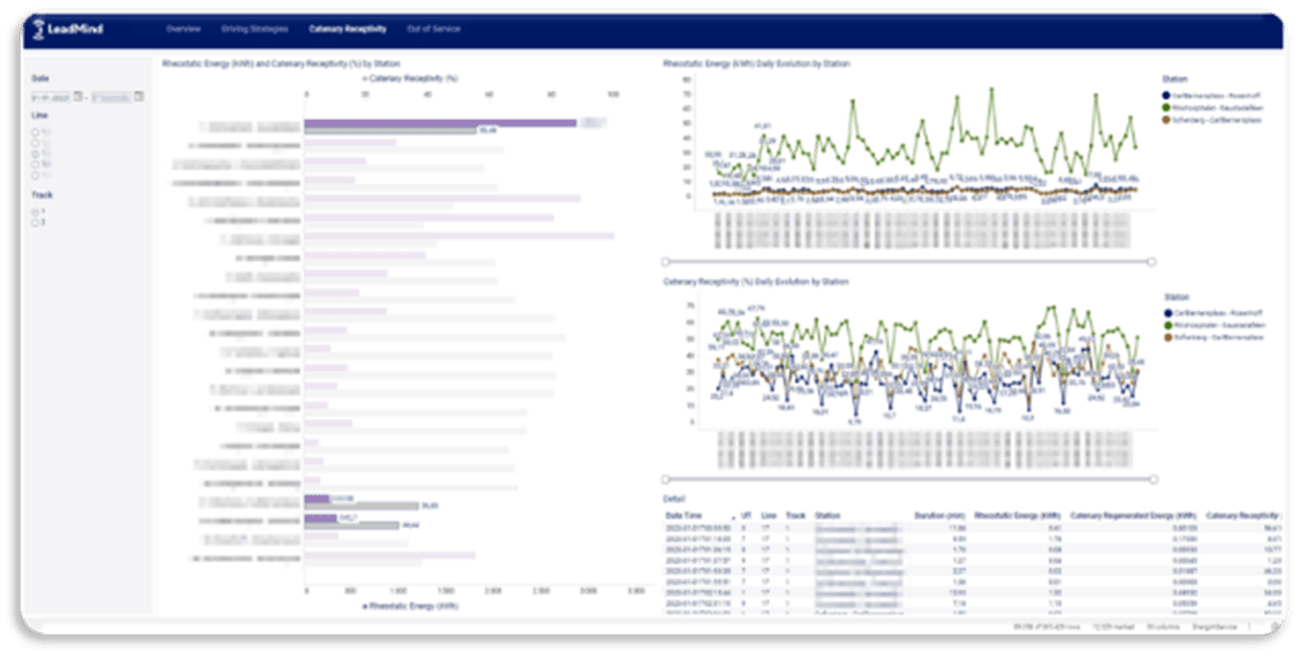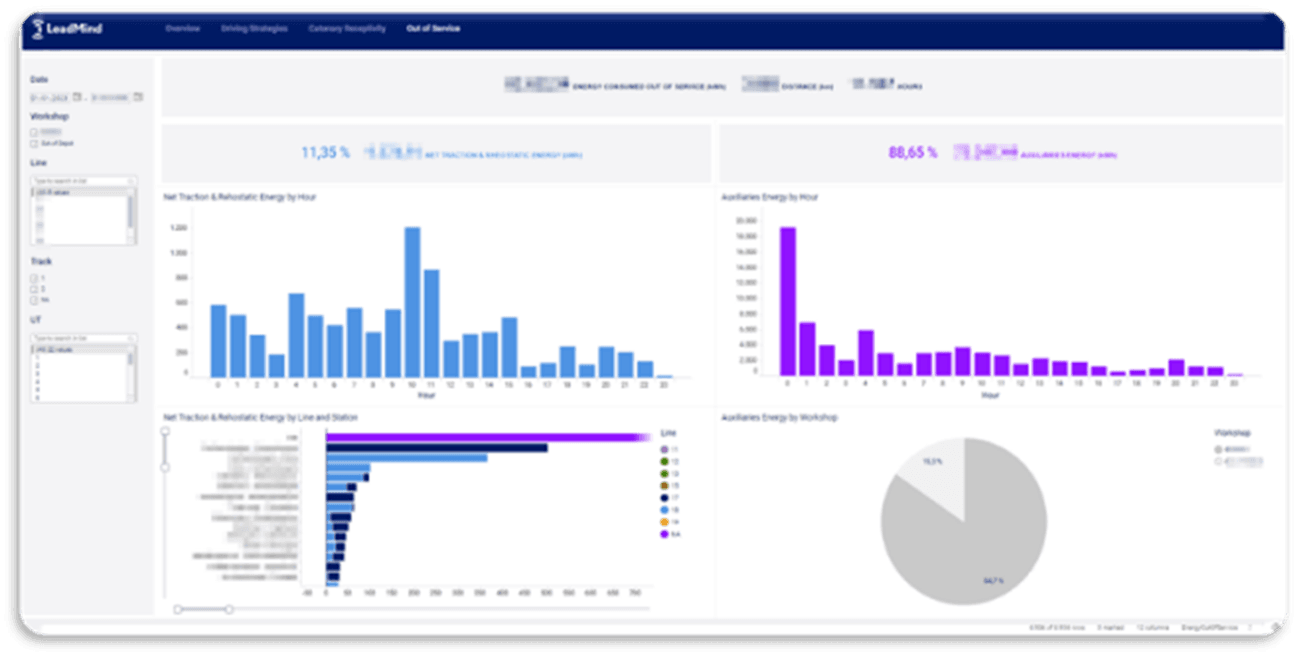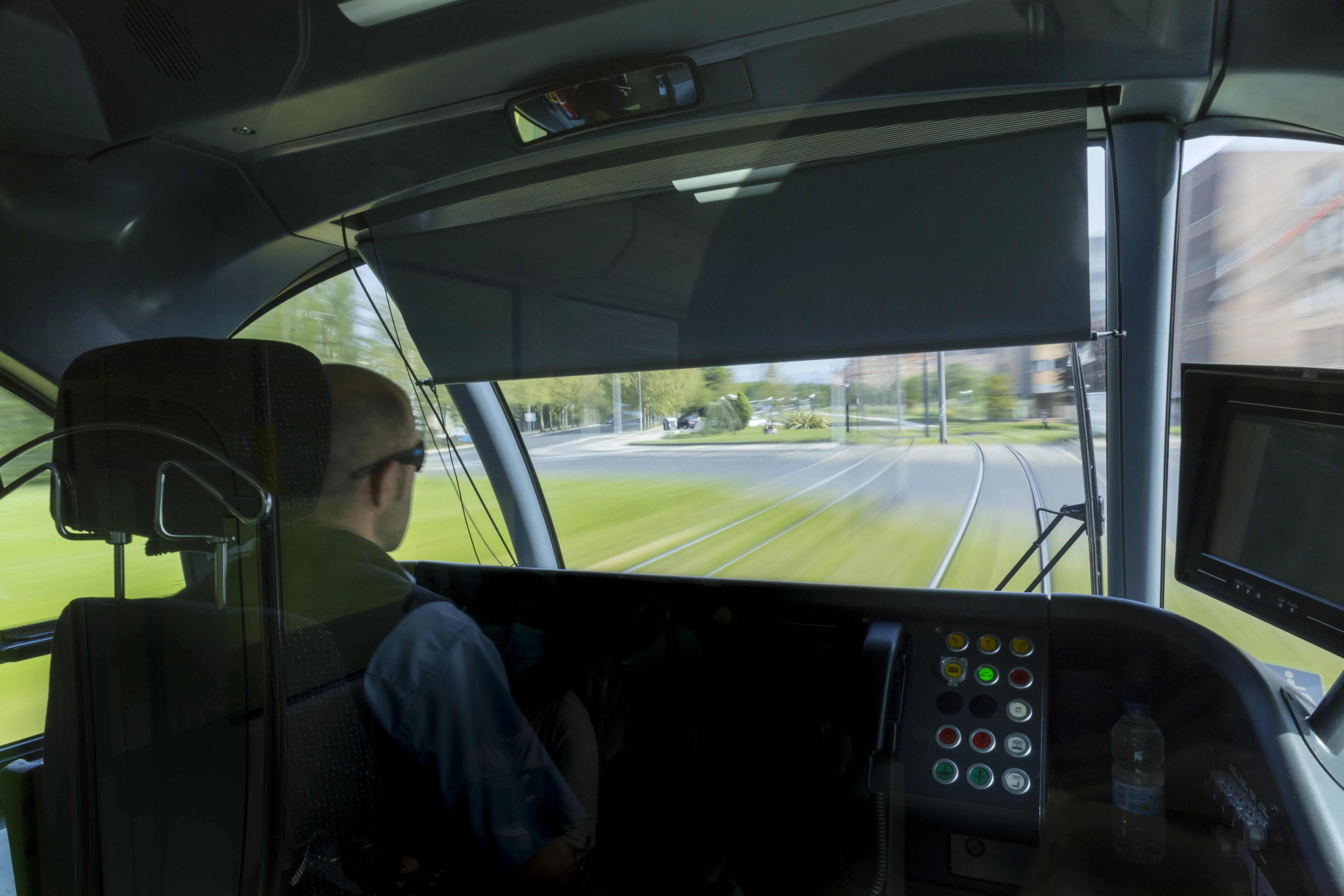OPTIMISING TRAIN ENERGY EFFICIENCY FOR A MORE SUSTAINABLE MOBILITY
CAF Expands Its Capabilities to Maximise Fleet Energy Efficiency
The recent surge in energy costs has underscored the urgent need for a more rational and efficient use of energy resources. Although rail transport remains the most energy-efficient mode of mass transportation compared to road and air travel, improving fleet energy performance and reducing emissions has become a top priority.
One of the key approaches to identifying inefficiencies and potential anomalies in rail fleet energy consumption lies in the integration of advanced data analytics. LeadMind, CAF’s digital platform, supports the design and implementation of energy-saving strategies through continuous monitoring, management, and control — contributing to a more sustainable mobility model.
By leveraging LeadMind, operators gain detailed insights into the energy consumption of individual trains, enabling the quantification of potential benefits from proposed initiatives and the evaluation of associated economic savings.
COMPREHENSIVE ENERGY INSIGHTS WITH LEADMIND
Fleet Management, Control, and Analysis
LeadMind offers a comprehensive overview of energy consumption, empowering users to analyse behavioural patterns across the network. Its intuitive dashboard displays the type of energy consumed (traction, auxiliary, rheostatic, and/or regenerated to the catenary) broken down by date, train units (TUs), and service lines.

Driving Strategies
Driving behaviour plays a crucial role in overall energy consumption. LeadMind identifies the most energy-efficient driving profiles for each track section, based on actual operational data. In some cases, differences of up to 40% can be observed between the most and least efficient profiles. By promoting smooth acceleration, adherence to speed limits, and passenger comfort, operators can analyse and estimate potential savings based on real-world performance.

Catenary Receptivity
This functionality monitors and quantifies energy dissipated through resistors, segment by segment. It enables operators to track excess regenerative braking energy and identify opportunities to recover it, thereby avoiding unnecessary energy loss and allowing it to be redirected to more sustainable uses.

Energy Consumption of Out-of-Service Trains
LeadMind also analyses the energy usage of trains that are not in active service — whether located in workshops or operating without passengers. This includes detailed data on the type, quantity, and timing of the energy consumed, contributing to a more accurate assessment of non-operational energy demands.
As the rail sector advances toward more environmentally friendly operations, LeadMind serves as a critical tool, providing transparency into energy usage, supporting data-driven decision-making, and enabling energy savings of up to 10% — while avoiding the emission of hundreds of tonnes of CO₂.


 .
.